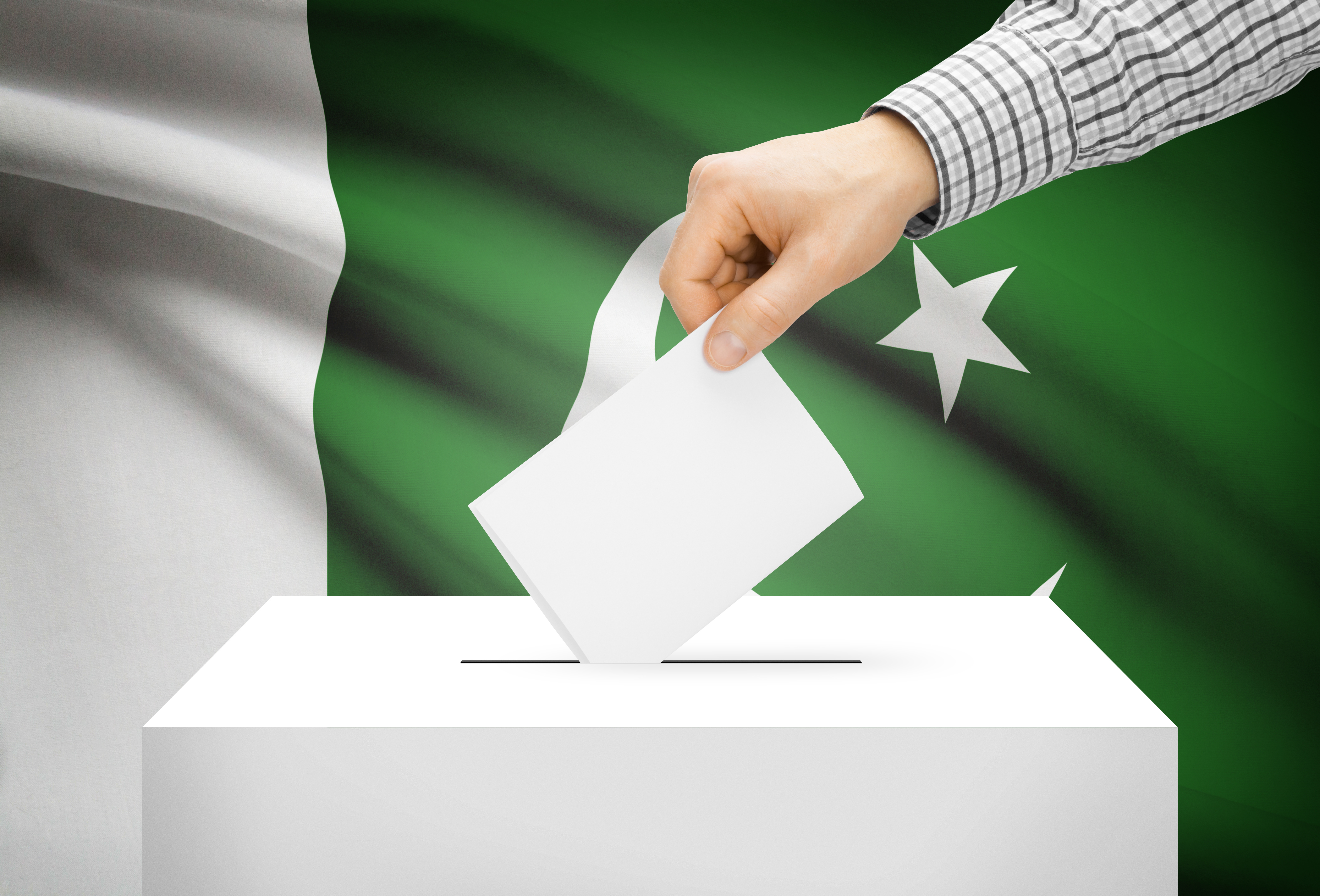
Today (8 February), Pakistan holds a general election. With an electorate of over 128 million people, these are some of the largest elections in the world.
The IOE&IT Daily Update explores the background to the political contest and delves into how it might impact Pakistan’s trade policy in the long term.
Election
Pakistan is going to the polls after several premierships marred by scandal and alleged military intervention.
Already beset by scandal and the ongoing question of military interference, voters have had to contend with a mobile network outage and militant violence that resulted in five people killed.
For the past six months Pakistan has been controlled by a caretaker government, following the ousting and later arrest of former prime minister and leader of centre-right Pakistan Tehreek-e-Insaf (PTI) party Imran Khan. Imprisoned on corruption charges, Khan remains the country’s most popular politician, according to polls, with remaining PTI candidates running as independents.
Other contenders include three-time PM Nawaz Sharif, leader of the centrist Pakistan Muslim League (PML-N), who’s returning from a six-year exile in London following imprisonment for corruption.
Finally, Bilawal Bhutto Zardari, leader of centre-left Pakistan People’s Party (PPP) and member of the Bhutto political dynasty, is the race’s third major contender. Although not predicted to win, it’s possible Bhutto could become a kingmaker in the event of a hung parliament.
Commentators have noted the lack of definitive policy offered by any of the contenders. Speaking to Reuters, Husain Haqqani, a former Pakistani ambassador to the US, said that: “This election cycle has had little discussion of issues – it’s been a campaign dominated by personalities."
Economic difficulties
Whoever emerges victorious will be expected to make headway solving the numerous economic difficulties affecting the country – as the currency grows weaker, inflation stands at 23.6% according to data from the IMF, with the global average 5.8%. Pakistan also faces a combination of low GDP growth, and low tax revenues – with the tax to GDP ratio falling to 8.5% for the 2022-23 fiscal year.
Among policy ideas that have arisen, both the PTI and PML have set targets designed to turn the economy around.
Sharif set out a growth platform, promising to get inflation down to single digits by the end of 2025 and increase growth year-on-year, reaching 5% in 2026. Exports are seen as integral to this plan, with a target of US$58bn set.
This sounds ambitious given that current estimates stand at US$25-30bn. However, caretaker federal minister for commerce Gohar Ejaz, recently announced an US$80bn target for this year – emphasising that trade is likely to play a prominent role in recovery strategies.
PTI have emphasised the need for greater development, with Muzzamil Aslam, a member of the party’s economic team telling Arab News the party “prefers long-term development goals rather than growth”. Its plans for growth included a focus on boosting productivity.
By contrast, Bhutto is running on a more progressive change platform with more emphasis placed on climate action and redistribution, pledging to increase the minimum wage by 8% every year.
One of the first challenges for whoever emerges victorious will be to negotiate a new bailout package with the IMF – with US$7bn due to the world’s lender of last resort over the next five years.
Amjad Waheed, CEO of Karachi’s NBP Fund Management told Bloomberg: “No matter who wins and who loses the election, our policies going forward will mostly be IMF-dictated”.
Trade profile
Considering the products that could help hit its ambitious export target, Pakistan’s trade profile is comprised largely of manufactured goods produced via its own raw materials.
A phase of industrialisation in the 1970s and 1980s, which followed the rise of a series of import-substitute industries as the country attempted to reduce a sizeable trade deficit. While still carrying a significant trade deficit, Pakistan has risen up the value chain with manufacturing capacity enabling manufactured goods to account for a greater proportion of the country’s exports, a shift incentivised by the government.
This trend is illustrated by some of Pakistan’s biggest exports, including linen, specifically house linen, knitwear and women’s suits, which totalled more than US$8bn, according to the Observatory of Economic Complexity (OEC). This is unsurprising as cotton is the country’s largest cash crop.
Other leading exports along the same trend are leather goods, carpets, chemical products and machinery are among other leading exports.
Rice is another sizeable export, valued at over US$2.25bn and ranked as Pakistan’s second largest. Elsewhere in the agriculture sector, live animal exports - including cattle, buffalo, sheep, goats, camels, and poultry - are a significant economic driver, as is the export of lobster and shellfish.
UK-Pakistan trade
In the year up to September 2023, Department for Business and Trade figures shows that trade between Pakistan and the UK was worth £4.2bn, a minor increase of 1.5% on the previous year.
Pakistan exported £2.4bn worth of goods and service to the UK over this period and imported £1.8bn worth of goods from the UK.
There was a significant shift towards an import of UK services, which made up £1.3bn (71%) of the total, an increase of over 20% on the previous year.



